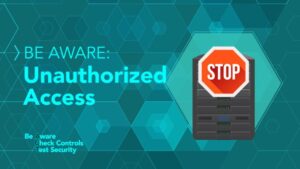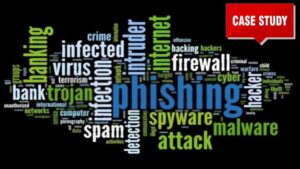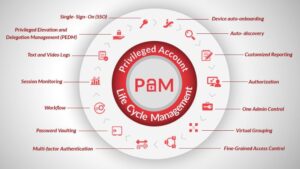Cybersecurity threats may be at early infancy, but rather than being set up to battle with them, they have been set up to attempt to conquer business processes where Privileged User Management currently stand trial. High-level access is indeed a privilege to some and a goldmine for hackers. If poorly managed, they in turn can cause a breach of sensitive data, disruption of operations, if not, a far-reaching security breach.
What is Privileged User Management?
Privileged User Management (PUM) is the governing, monitoring, and securing activities of accounts that would possess additional privileges. It guarantees that only authorized users carry out most of the primary actions on the system, which may considerably reduce the risk that a breach will occur.
More About Cybersecurity Risks to Privileged User
Cybercriminals usually subvert weak Privileged User Management access controls to penetrate the network. Data breaches triggered by insider threats and stolen credentials use privilege abuse as an avenue to wreak havoc, while these actions can quite easily result in ransomware attacks.
Why Is This Topic Important in Today Digital Environment?
With the rising number of sophisticated attacks, various organizations must tighten their Privileged User Management access security. If properly managed, this will deny unauthorized access, comply with applicable regulations, and protect vital assets. Otherwise, it can translate into losses and tarnished reputations followed by lawsuits.
A detailed discussion covering the “why” behind privileged user management and how organizations can implement it is presented.
Understanding Privileged Users in Cybersecurity
It defines an extremely important aspect of the IT security architecture of the organization. These users usually have extended access to sensitive systems, databases, and occasional configurations. If something goes wrong with their accounts, they can, unfortunately, become the weakest link in the entire cybersecurity scenario, sometimes leading to the most catastrophic data breaches. Knowing who they are, the kind of accounts they have, and what they do regarding the IT infrastructure of an organization are necessary for security of the digital assets of an organization.
Who are Privileged Users?
Privileged users are the individuals whose access rights extend beyond those of a regular user within that IT environment in an organization. Their privileges differ significantly from those of other employees, who can do simple functions such as sending emails or accessing shared files. Privileged User Management have the rights to make modifications to the security settings and install software as well as access some critical systems.
Privileged users are typically:
- System administrators responsible for managing operating systems, databases, and IT resources.
- IT team members that troubleshoot and configure user accounts, devices, and software.
- Network engineers maintain and secure network infrastructures, firewalls, and VPNs.
- Database Administrators controlling database access and managing sensitive information.
C-Level Officers (CIOs, CTOs, CISOs) supervise IT and security policies with access at an overwhelmingly higher level. Given the above evidence, the privileged end-user is a primary target for hackers. Authentication credentials hacking is mostly intended to gain unauthorized access to and sometimes exploit critical systems.
Common Examples of Privileged Accounts
Not all Privileged User Management have the same access to systems. The level of access granted is directly dependent on the type of privileged accounts they manage. The following are the most common types:
- Administrator accounts: Complete access to every aspect of systems, applications, and security settings.
- Root accounts: Available in Linux or Unix environments, these accounts allow access to the entire system without any restrictions.
- Domain admin accounts: Are allowed to control Active Directory settings, user authentication, and access to network resources.
- Service accounts: Are accounts created to be used by applications or processes wishing to perform automated tasks without any human intervention.
- Privileged business user accounts: These are accounts used mostly by the high-level executives or finance teams of an organization for accessing confidential business data.
- Emergency (break glass) accounts: Temporary elevated access in emergencies, such as system failure or cyber-attack.
Each of these accounts carries its specific risk. If not secured properly, the accounts can be exploited to plot and successfully execute manipulation of the system, stealing data, or conduction of cyberattacks.
Role of Privileged Users in IT Infrastructure
Privileged User Management are the backbone of an organization’s IT security. They will directly affect data integrity, network security, and system reliability with the various keys:
- Managing User Access – Setting boundaries on who gets to critical systems while enforcing security policies.
- In fact, unauthorized access is prevented through a variety of security configuration settings, firewall rules, antivirus programs, and protocols.
- Updating software with security fixes and patches designed to protect against vulnerabilities is considered a system maintenance activity.
- Glimpsing suspicious activities in the network and issuing a response if threats to security are confirmed.
- Investigating and responding to cybersecurity incidents to minimize or prevent any data compromise.
Privileged-user security risks arise when oversight does not exist and Privileged User Management take actions in their duties either through intent or accident. Thus, one point in the cybersecurity realm that is huge-great would be privileged user management. An organization ought to institute rigid access control, auditing, and monitoring systems designed to discourage the abuse of privileges.
The next section focuses on why priviledged user management is so important and the risks inherent in surefailing to secure privileged accounts.
Why is Privileged User Management Crucial?
Privileged User Management as a Compulsory Element in Cybersecurity: Due to the nature of work, organizations depend on privileged accounts to operate crucial systems, manage IT infrastructure, and handle sensitive data. But mismanagement of such accounts must invite domain expert attention, as these accounts are prime targets for hackers and sometimes malicious insiders. Lax privilege access control may mean unauthorized entry, data breaches, and noncompliance, which can genuinely hurt an organization financially and reputationally.
Let’s delve into the reasons privileged user management is seen as a priority by dissecting the greatest risks that organizations face.
Risk of Unauthorized Access and Data Breaches
The most significant risk in cybersecurity is usually unauthorized access to privileged accounts. Always on the lookout for all possible ways to break into systems with such targets-miscreants keenly and determinedly pursue privileged accounts. Once hackers get hold of these accounts, they bypass security controls, exfiltrate private data, install malware and may even take down entire networks.
Manner of Unauthorized Access:
- Credential Theft: Theft of login credential information by hackers via phishing, malware, or brute-force attacks.
- Weak Passwords: Many privileged accounts use weak or default passwords that may be easily cracked.
- Lack of MFA: Without it, an attacker could log in with stolen passwords without any further confirmation.
- No Monitoring of Privileged Accounts: Privileged accounts that have gone dormant or unwatched are rarely the subject of scrutiny.
Real-world Example
A prominent major cyber assault took place on Twitter in 2020, which decided the breaking into employee privileged accounts. The assailants reportedly utilized social engineering to procure credentials and seize control of Twitter’s high-profile accounts belonging to Elon Musk, Barack Obama, and Bill Gates, all for the purpose of advancing a Bitcoin scam. This undoubtedly has widened the horizons about weak Privileged User Management controls in danger.
Takeaway
Unauthorized access can lead to huge security breaches, financial frauds, and reputational loss when there is no stringent privileged user management.
Insider Threats: An Increasing Concern
Cybersecurity threats are not just external and include a threat that takes the form of one of the worst, that is, insider threats: an employee, contractor, or business partner who, by misusing their Privileged User Management access, damages, or causes losses to their organization.
Types of Insider Threats
- Malicious Insiders-employees or contractors involved in leaking, stealing, or otherwise compromising company data.
- Negligent Insiders-Users who unknowingly place the system at risk by failing to keep secure credentials, and who may also compromise systems by falling for phishing tricks.
- Compromised Insiders- Privileged users whose accounts have been hijacked by cyber-individuals with malware or phishing.
How Insider Threats Exploit Privileged Access
- Steal sensitive data and sell it on the dark web.
- Setting up backdoors for unauthorized external access.
- Cover their tracks by disabling the controls.
- Corrupt systems by removing or changing important files.
Real-World Example
A former employee with an attitude against Cisco took advantage of their Privileged User Management access in 2019 and deleted several hundred virtual machines, thus disrupting the networks of customers, which cost the company up to $1.4 million in damages. The culprit, being an internal employee, can hardly be arrested, but it is enough to demonstrate how much havoc a single disgruntled employee with privileged access can cause.
Takeway
Organizations should monitor privileged users, restrain unneeded access, and introduce stringent measures for detecting insider threats.
Compliance and Regulatory Requirements
Beyond security risks, there are regulations that require organizations to impose strict conditions on privileged access. If those conditions are not followed, the company could be slapped with lots of fines that could have heavy financial consequences.
Most Important Compliance Regulations
- GDPR (General Data Protection Regulation) – this regulation requires that organizations should protect personal data as well as control who gets to access sensitive information.
- HIPAA (Health Insurance Portability and Accountability Act) – requirements for some very serious access controls over patient health-related data.
- SOX (Sarbanes-Oxley Act) – concerned with secure keeping of financial information and also with Privileged User Management access.
- PCI DSS (Payment Card Industry Data Security Standard) – applies special privileges for inappropriate access.
- NIST & ISO 27001 – international standards setting guidelines for the implementation of security for privileged access in an IT environment.
Consequences of Non-Compliance
- More seriously, the level of fines- any Governance Act may levy fines of up to €20 million or up to 4 % of the total worldwide turnover for serious misconduct.
- Legal liability- Organizations can be sued by customers or any regulatory body.
- Loss of customer trust- Data breaches arising from poor privileged access management can seriously hurt an organization.
These measures make sure organizations will keep themselves in line with privileged access policies, audits, and compliance logs.
Managing privileges is not a special treat, but rather an essential capability in the realm of cybersecurity. Organizations have a high probability of experiencing unauthorized access, insider threats, and compliance violations. With compliance with excessive access regulations, activity monitoring of privileged users, and security best practice implementation, firms can alleviate the risks involved and secure their most valuable digital assets.
Next, we shall delve into how the mismanagement of privileged users can bring about damages at the security level and what organizations can do to avert such situations. Stay tuned!
How Privileged User Mismanagement Leads to Cybersecurity Risks
Improper management of privileged users is among the briefest cybersecurity vulnerabilities. When these privileged accounts are left unsecured or unmonitored and uncontrolled, they become easy targets for cybercriminals. mismanagement could lead to data breaches, financial losses, regulatory penalties, and operational interruptions. This section discusses real-world example case studies, poor consequences of privileged access controls, and how hackers took advantage of these deficiencies.
Real-World Case Studies on Security Breaches
A couple of the most notable cyberattacks have been caused due to mismanagement of privileged users. Here are three major breaches that enfatize the risk involved:
Target Data Breach
What happened? – Hackers stole login credentials from a HVAC vendor, a third-party privileged-access vendor into Target’s systems.
Impact
Attackers gained access to the Target payment network for stealing 40 million credit and debit card information During Lesson: Permissive third-party access coupled with weak monitoring of privileged accounts can yield large breaches of security.
The Snowden Leaks
What Happened? Edward Snowden was a privileged IT contractor, using his administrative access to copy and leak classified NSA documents.
Implication
The breach exposed global surveillance operations and redounded injury to national security in the United States.
Lesson
Lack of privileged user monitoring could allow insiders to misuse their access for illicit actions.
The Uber Data Breach
What Happened? The hackers accessed a private repository owned by Uber on GitHub, in which privileged credentials were being stored.
Impact
$57 million were striped from personal data of users. Uber will pay hackers $100,000 to maintain the breach quiet.
Lesson
Badly stored credentials and single-factor authentication facilitated access by attackers to privileged accounts.
These prove that not only are organizations very vast, but they also suffer considerably due to a lack of good privileged access management. The effect of all this measured is devastating.
Poor Privileged Access Controls Impact
When privileged user management is lacking in a company, there are serious associated risks, including:
Increased Risk of Data Breach
- These accounts represent direct access to critical systems and sensitive data.
- Using stolen admin credentials, hackers can operate unnoticed bypassing security measures.
Operational Disruption
- Attackers who have compromised a privileged account could shut down systems completely, delete files or even disable security tools.
- Privileged accounts are often the route through which attacks occur. Ransomware encrypts data and cold-calls the business for huge amounts of cash.
Financial and Reputational Damage
- Data breaches cost companies millions in fines and legal fees.
- Customers lose faith in businesses when they are unable to adequately protect sensitive data.
Non-compliance Penalty
- Ensures the management of privileged access according to the provisions of the laws such as GDPR, HIPAA, and PCI DSS.
- Civil action may entail lawsuits and regulatory fines for noncompliant organizations.
Key Takeaway
Poor privileged access controls make businesses susceptible to enormous risks. Strong and timely audits, strong security policies, and real-time monitoring are critical.
How Hackers Exploit Poor Privileged User Security
Criminals employ all possible tricks to take advantage of poorly managed privileged accounts. Here’s how they do it:
Credential Theft Using Phishing
- Employees are made to reveal admin credentials through fictitious login pages or phishing emails.
- Once obtained, they bypass all security measures to gain unauthorized access.
Exploiting Dormant/Unmonitored Accounts
- Many companies do not disable old admin accounts, therefore, leaving them exposed.
- These types of unused privileged accounts are targeted by hackers to access sensitive and valuable data without notice.
Weak Password Brute Force Attacks
- Many privileged accounts still operate with either default or weak passwords, for example “Admin123”.
- Automated tools are then used by attackers to break weak credentials and enter the system.
Privilege Escalation Attacks
- An entry hacker starts accessing low levels and then further escalates the level of privileges reaching an admin level by taking advantage of vulnerabilities in the system.
- Then, it normally disables the security tools and starts stealing data or deploying ransomware attacks when privileged access has been obtained.
Insider Threats and Social Engineering
- Credentials can be leaked by disgruntled or compromised employees who might also misuse privileged access.
- Attackers usually disguise themselves as IT support to trick employees into giving higher access permissions.
Poor privileged-user management is a time bomb for cybersecurity. Organizations must put set access controls, MFA, activity monitoring, and removal of all unnecessary rights.
The best practices in protecting privileged user accounts from cyber threats will be the subject of discussion in the coming section. Stay tuned!
Best Practices for Effective Privileged User Management
Unless properly handled, a single privileged user can leave a backdoor for hackers or malicious insiders to walk right into security-savvy organizations, and the consequential internal security breaches can save them a lot of trouble-they can be as severe as data breaches, financial loss, and compliance violations. To mitigate all these risks, organizations should be employing the industry’s best practices ensuring the security and control of privileged accounts.
Three ways to manage a privileged user
- Principle of Least Privilege (PoLP)
- Regular auditing and monitoring of privileged accounts
- Multi-Factor Authentication (MFA) for enhanced Security
Applying the Principle of Least Privilege (PoLP)
Principle of Least Privilege is by far the best security measure for privileged accounts because it states that a user should only be given the least possible access privileges to perform whatever tasks he/she is supposed to perform-nothing more.
Reasons Why PoLP is Important
- Reduce exposure to attack – The hackers focus on fewer high-privileged accounts to attack.
- Inhibit insider threats – Employees and contractors can’t misuse privileges they don’t have.
- Minimize human errors – It’s unlikely that important systems will be changed by mistakes.
Implementing PoLP in the Right Way
- Restrict Admin Access – Admin access should only be assigned to the employees needing it. For example, an HR employee should not have access to server configurations.
- Role-Based Access Control (RBAC): It is typically about providing the access rights or permissions based on job roles. For example, an IT support technician may need read-only access to logs but not the ability to modify them.
- Apply Just-in-Time (JIT) Privileges – Grant temporary privileges only when needed. For example, a developer troubleshooting an issue may get admin access for a few hours, after which it automatically expires.
- Regularly Review Access – Continually assess user access levels and revoke unnecessary privileges.
For Example, Microsoft’s PoLP is in its Azure Cloud Telemetry services, where organizations can offer temporary admin rights instead of permanent ones, thereby reducing exposure to privilege abuse.
Key Takeaway
The more restricted privileges a user has, the less appealing the target becomes to the attacker.
Regular auditing and monitoring of privileged accounts
Not just storing access credentials. Such accounts must be permanently monitored for any activities that might turn into security incidents in the future.
Reasons Why Auditing and Monitoring Matter
Detects Unauthorized Access – Immediate action can be taken once suspicious activity is seen using an admin account from an unknown geographic location.
Identified Dormant Privileged Accounts – Accounts that were old and not used anymore would be a prime target to hounds from hackers and should be removed immediately.
Compliance – Certain regulations like GDPR and PCI DSS state that account activities of privileges should be logged and reviewed.
Best Practices for Auditing and Monitoring
Enable Real-Time Activity Logging – Keep track of every login, access event, and privilege escalation event.
Implement SIEM Tools – Automate log analysis and flag unusual activity.
Conduct Privileged Access Audits Regularly – Review privileged accounts every three to six months for compliance.
Set Up Automated Alerts – Receive instant notifications on unusual activities such as failed login attempts or unexpected privilege escalations.
Example
Months went by in silence after the cyberattack of 2020 on SolarWinds due to an absence of active monitoring of privileged account activities. Hackers gained access via lateral movements across systems using stolen credentials. The breach would have triggered an alarm if the activity had been monitored in real time.
Key Takeaway
Regular auditing ensures that privileged accounts are only used by authorized personnel for legitimate purposes.
Multi-Factor Authentication (MFA) Provision for Security Enhancement
MFA requires users to authenticate their identities along with their passwords by using additional means – therefore, security becomes a little better than merely passwords. Having stolen credentials, hackers will find it much more difficult to actually break through.
Why MFA is Important to Privileged Accounts
- Prevents Unauthorized Access – Even though a hacker may steal a password, logging in has to be verified by the presence of a second authentication factor before it can be accessed.
- Reduced phishing risk- Phishing attacks comprehensive rely on obtaining log-in credentials of target individuals, but even if the password has been compromised, access would still have been denied because of MFA.
- Compliance with Standards – PCI DSS, NIST, and other regulatory frameworks such as GDPR require organizations to enforce their MFA requirements for sensitive accounts.
Best Practice in Implementing MFA
Strong MFA Methods Needed – The best and most secure are:
- Hardware security keys (YubiKey, etc)
- Biometric authentication (fingerprint or facial recognition)
- One-time passwords (OTPs) via authentication apps (Google Authenticator, etc)
MFA for All Privileged Users-Enforceable to All Admins, IT Others, and Executives.
Avoid, if possible, SMS-Based MFA- There can be SIM swap attacks, too, using which one can steal codes received through SMS. App or Hardware based MFA is more secured.
Require MFA for Remote Access- Any privileged individual who is accessing the corporate systems outside of the corporate environment needs to authenticate through MFA.
Example
In 2021, Colonial Pipeline’s privileged VPN account consisting of a privy password, and hence with no MFA, was subjected to a ransomware attack. Had it been MFA enabled, the attackers would not have been able to breach this account with such ease.
Key Takeaway
This is one of the simplest and most effective measures in safeguarding privileged accounts against cyberattacks.
Strong privileged user management should be multi-layered. Organizations should be able to minimize risks, block breaches, and comply with the necessary security regulations through the implementation of PoLP, auditing of privileged accounts, and enforcing MFA.
In the next section, we will look at advanced security solutions and tools that help businesses automate and enhance privileged access management. Keep following!
Advanced Strategies for Strengthening Privileged User Security
Organizations need to have more sophisticated protection for privileged accounts than basic security measures such as multi-password and Multi-Factor Authentication (MFA) in this present-day threat landscape. There is an increasing sophistication in the ways cyber criminals break security controls by carrying out credential theft, privilege escalation, and social engineering.
Protective and proactive automated security solutions are the current solutions businesses must implement in order to remain ahead of these threats. The next section addresses these three advanced strategies in Privileged User Management security:
- Deploying Privileged Access Management (PAM) Solutions
- Automating Privileged Access Controls
- Employee Training and Awareness Programs
Deploying Privileged Access Management (PAM) Solutions
Privileged Access Management (PAM) solutions will build a central authority for controlling and monitoring Privileged User Management accounts, securing them, so that organizations maintain stringent security policies with the least possibilities of internal threats and unauthorized access to critical systems.
Key Benefits of PAM Solutions
- Secure Password Management – PAM solutions store privileged credentials in a vault and rotate passwords automatically in dire-case scenarios.
- Session Monitoring and Recording – The sites covered enable organizations to monitor Privileged User Management sessions in real-time and flag dubious activity.
- Just-in-Time Access – PAM gives organizations the option to provide temporary privileged access rather than granting permanent admin rights to users.
- Least Privilege Enforcement – Ensures that users only receive that precise level of access they need for their tasks.
Audit and Compliance Support – It provides all necessary detailed logs and reports for security audit purposes and compliance with regulatory authorities.
Top PAM Solutions in the Market
- CyberArk – Considered more than one of the strongest and trusted PAM tools in use by enterprises.
- BeyondTrust – Offers AI-powered threat detection for privileged access.
- Delinea (formerly Thycotic & Centrify) – This solution currently offers a flexible PAM solution well-suited for hybrid cloud environments.
- Microsoft Privileged User Management Identity Management (PIM) – Integrated with Azure AD for cloud-based privileged access security and local resources.
Example
This was proved by a financial services company which changes pam CyberArk and decreased the attempts to develop unauthorized privileged access by 85% within six months.
Decryption
PAM solutions thus create an end-to-end control over Privileged User Management accounts, making it hard for attackers to exploit them.
Automating Privileged Access Controls
The privileged account management process is extremely inefficient and error-prone. Policy enforcement, access changes and responding to in-line threats are real-time threats that security teams often face. With most privileged access controls, savings possible include enhancing security for businesses while relieving operational burdens from dealing with epidemiological issues.
Here are ways Automation improves security
- Quicker Incident Response- Automated systems can detect suspicious Privileged User Management access instantly and revoke it immediately.
- Eliminates Human Errors- This eliminates misconfigurations, forgotten privilege removals, and security gaps.
- Dynamic Access Adjustments- AI-driven analytics allow granting or revocation of privileges depending on the user’s behavior.
- Seamless Integration with SIEM Tools- End-users receive case alerts and forensic data for investigations in real-time.
The Automation Of Privileged Access Management
AI Based Anomaly Detection
This uses machine learning to capture unusual log-in locations, failed log-in attempts, or escalation of privileges.
Automatic disabling of inactive privileged accounts after the set time limit will activate.
Self-Service Privileged User Management Access Requests: Employees will be able to request temporary privileged access. AI-powered policies will automatically either approve or deny the requests.
Accelerated Report Generation for Compliance
As audits are costlier and tedious because of the involvement of people, the mention makes the saving by creating detailed privileged access logs for audits without manual work.
Example
By using AI-driven privileged access automation, an organization was able to reduce admin login anomalies by 70% and was protected against potential credential-based attacks.
In Essence
Automation twists dependence on human input so that Privileged User Management accounts are always securely concerned, constantly monitored and quickly adjusted according to risk factors.
Programs for training and employee awareness
Nothing can beat technology when it comes to unjustified privileged access risks-however, such technology alone cannot also train corporations on how to spot and avert security threats. Human error remains one of the primary causes of a breach in cybersecurity, with constant education being truly required.
Why Training Is Vital for Privileged Users
- Reduces Insider Threats-Determines the suspicious activities that an employee has to report.
- Prevents Credential-Based Attacks-Train staff never to reuse passwords or fall victim to phishing.
- Makes for a Security Culture-All Privileged User Management appreciate the value of adhering to security protocols.
- Strengthens Compliance-Employees must receive periodic security awareness training per various industry compliance requirements (GDPR, HIPAA, etc.).
Best Practices for Training Security to Privileged Users
- Simulated Phishing Attacks-Knowledge measure: Fake phishing mails sent to employees test their awareness.
- Security Training by Role-IT administrators must undergo advanced training covering Privileged User Management risks and mitigation.
- Incident Response Exercises-Train on the privilege misuse and security breach response.
- Refresher Courses-Since cyber threats are in constant evolution, training should be updated after every 6-12 months.
Example
After the rollout of a privileged access security training program, a tech company saw phishing email clicks drop by 40% in just four months.
Key Takeaway
Educated employees are a first defense line against privileged access attacks. A well-educated workforce reduces human error and insider threats considerably.
Privileged User Management security strengthens, involving IT and human awareness. Cybersecurity risks may be brought down drastically by
Using PAM(Priiveleged Access Management); to save the privileged credentials.
Automating privileged access control to prevent unauthorized escalation of privileges.
Ongoing training and awareness programs to train employees.
Whenever an organization implements these forward-looking strategies, privileged user accounts will be safe, compliant, and secure from any cyber threat.
In the following section, we will explore how organizations can ensure the long-term protection of privileged access through continuous monitoring and incident-response strategies.
Conclusion and Final Thoughts
It’s not enough to consider privileged user management a cybersecurity best practice; it has become imperative in today’s digital world. With failure to secure Privileged User Management access comes dire consequences for organizations: data breach, insider threats, regulatory fines, and so on. The good news is that implementing Privileged Access Management (PAM) solutions and automating security controls while strengthening the security culture across the organization will help in drastically reducing these risks.
The future of cybersecurity will morph into something else with AI-led security automation and zero trust becoming increasingly prevalent in the Privileged User Management access protection arena. For their part, companies have to stay ahead in continuing to update security policies, monitoring everything around Privileged User Management activities, and investing in employee training to avoid human errors.
If your organization is looking to improve its cybersecurity posture, this is the time to act. Start by auditing all existing privileged accounts, enforcing the least privilege principle, and implementing PAM tools to secure critical assets. Cyber threats won’t wait; proactive security now can save you from costly breaches tomorrow.

Ahsan Ali is a technology blogger and the founder of Techzivo.com, a platform dedicated to delivering insightful and practical content for tech enthusiasts.He currently focuses on creating in-depth articles around cybersecurity, aiming to help readers stay safe and informed in the digital world. With a passion for emerging technologies, Ahsan plans to expand Techzivo’s coverage into other technology micro-niches such as AI, cloud computing, and digital privacy, offering valuable insights for a broader tech-savvy audience.






